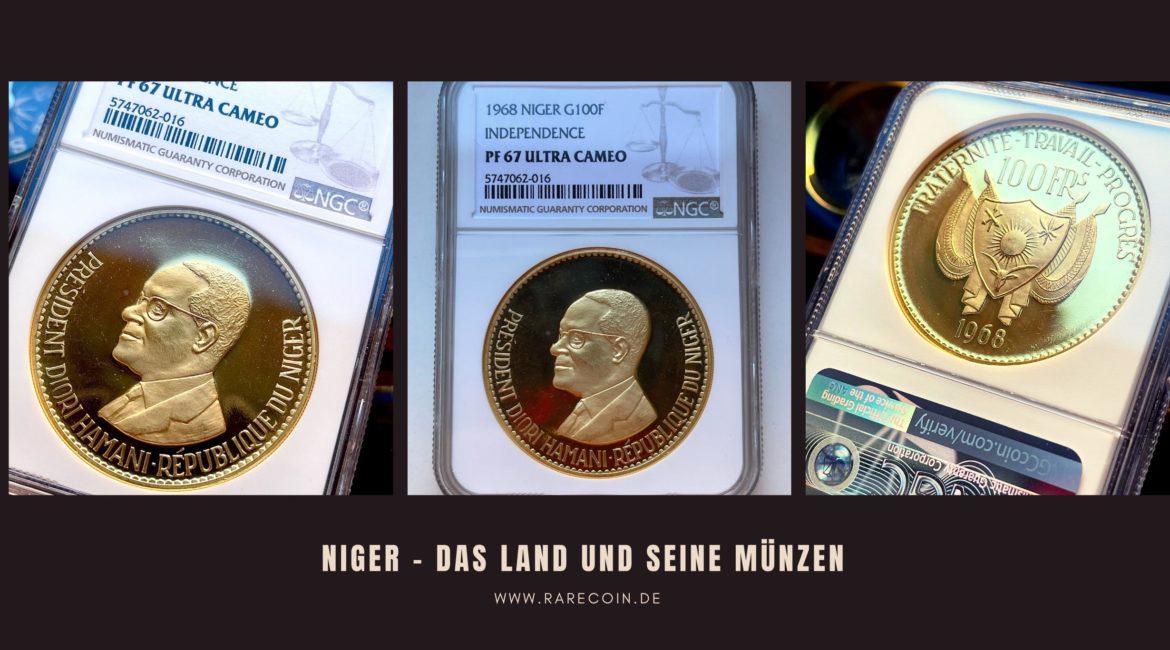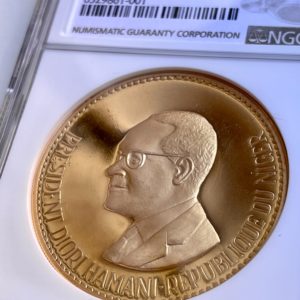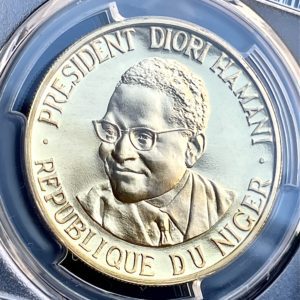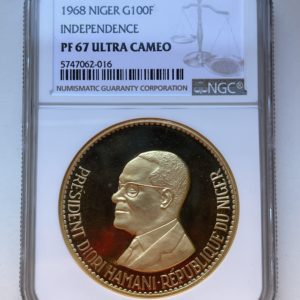Niger is a country that is often confused with Nigeria (there is actually a state of that name within Nigeria), but they are two completely different states.
A few details:
- Official Name: Republic of Niger (Republique du Niger, Republic of Niger)
- Capital: Niamey City
- Area: 1.267.000 km²
- Population: 26.4 million (as of 2022)
- Population density: 14.2 persons/km²
- Largest cities: Niamey, Zinder, Maradi, Tahoua, Agadez
- Official language: French
- Currency: CFA Franc (CFA = Franc de la Communauté Financièred’Afrique)
Geographical location
Niger is a state in West Africa. It borders Algeria, Libya, Chad, Nigeria, Benin and Burkina Faso. Most of the country is flat, while the northern areas are occupied by the stony plateaus of the Sahara Desert. With an area of around 1.3 million km², Niger is the largest country in the region. Among the other states of the African continent, Niger stands out not only for its size, but also for its climate, landscape, interesting history and culture.
Niamey – the capital of Niger
Niamey is the capital of one of the largest states in Africa, the Republic of Niger. Located in the western part of the fascinating and mysterious African continent, it is reminiscent of a fairy-tale city from the Orient.
History of Niamey
The capital of Niger is a young city. Niamey was built on the site of a small settlement in the southwest of the present-day republic, on the left bank of the Niger River. In 1892, French colonists established a military post on the site of the settlement. At the beginning of the 20th century, the city belonged to the autonomous region of Zinder, which changed its name in 1910 and became the territory of Niger (at that time Niger was not yet an independent state). The name of the city translates as “the place by the tree where the water is drawn”.
Niamey today
The favorable location allows the city of Niamey to develop into an increasingly large and actively used commercial and transport hub. Traditional handicrafts (production of unique gold and silver jewelry, bags, purses, leather accessories with a special local flavor, pottery, tableware with traditional African ornaments) are still popular and profitable, but large consumer goods, food and textile companies are also being actively built in Niamey.
A large part of the state budget comes from the revenue generated by tourists who come to admire beautiful eastern Niamey. To maintain demand for this destination, the country’s authorities are actively developing the city’s infrastructure. The world-famous Grand Hôtel Du Niger, with its comfortable five-star rooms and excellent service, is active here. The entire northwestern part of the city is covered with new buildings, reminiscent of a typical European residential area. The government attaches particular importance to the appearance of the city: the facades of public buildings are in the same style and decorated with national ornaments.
Of great cultural importance for the entire African continent is the National Museum of Niger (French: Musée National du Niger), founded in 1959. The exhibition of the museum consists of exhibits embodying the main types of national African crafts.
Niamey – the most popular sights:
- Lotus SPA
- Grand Marché
- Great Mosque of Niamey
- Ferme Youyou
- National Museum of Niger (Musée National du Niger)
Niger sightseeing
The city of Zinder is known for its unusual architecture with many monuments of Islamic culture, such as mosques. Compared to other cities, the infrastructure is not bad. In the oldest quarter of Birni there are square houses with geometric patterns and wall paintings. There is the Zengu district, inhabited mainly by the Hausa tribe, and the New Town, which is the economic center.
The city of Agadez dates back to the 11th century and nearby is the largest rock drawing in the world; life-size giraffes painted on rocks some 10,000 years ago. The picturesque town of Ayorou on the banks of the Niger is another highlight worth a trip along the river. The mud-brick city center of Zinder and the Sultan’s Palace there, The W National Park with its elephants in Africa, the Giraffe Sanctuary in Kouré, the largest sanctuary on the mainland, the Ayre and Tenere National Park and the Ayre Plateau with its half-excavated archaeological sites.
Climate
The climate is tropical. In most of the country there is almost no precipitation, only in the extreme southwest small amounts fall, but even here not more than 100 mm per year. The climate in Niger is characterized by strong diurnal temperature fluctuations. The average temperature is +30-40 °C during the day, while frost is possible at night, especially in the desert.
Flora and fauna
The flora of Niger consists of semi-desert vegetation. Date palms are widespread in the oases.
The only animals that live in the Saharan sand are antelopes and sand foxes (sand foxes resemble their relatives the red and ice foxes). Giraffes, elephants, antelopes and warthogs (the warthogs owe their name to their facial warts. The animals can weigh up to 150 kilograms and, with a little luck, live to be 15 years old) are found in the southern areas.
Government system
Niger is a presidential republic. The legislative body is the Parliament. Territorially, the country is divided into 8 departments and one metropolitan region. The national currency is the CFA franc. The capital is the city of Niamey.
Population
The population is about 26.4 million people (in 2022). The population is mainly composed of members of the Niger-Congo and Songai language groups, as well as the Tuareg-Berber tribes living in the north of the country. The official language is French, and the Sôngui, Bantu and other languages are used in everyday communication. Up to 80 % of the believers are Muslims, while the rest hold on to old traditional beliefs.
Economy
Niger is an agricultural state with a predominantly agricultural sector. Peanuts, sugar cane, cotton, millet, sorghum and cassava are grown here. The livestock breeding is nomadic. Main exports: uranium concentrate, live cattle, peanuts.
Minerals
The country’s greatest wealth is uranium ore, over which Niger has the ninth largest uranium reserves in the world. Niger is the sixth largest mining company in the world. Proven reserves of uranium ore are estimated at 200,000 tons. The main uranium deposits are located in the western part of the Ayre Plateau. Mining is carried out in the cities of Arlit and Akuta. Uranium is also being mined on the Jado Plateau: Large deposits have been found at Kawara Oasis, and the uranium deposit in Niger is believed to be much larger.
The country is rich not only in uranium, but also in other minerals. North of the city of Agadez there is a coal deposit called Anu-Araren with reserves of about 6 million tons. The iron ore deposit, phosphate deposit, tungsten and tantalum cassiterite, limestone and gypsum deposit, table salt deposit belong to the mineral resources of Niger. Smaller gold placers were found in the sediments of the Sirba River.
Separate geological surveys found copper, niobium, lithium, manganese, cobalt, nickel and other minerals. Geological exploration, investigation and development of the country’s subsurface is an important and promising task with potential for the development of the country’s economy.
History
Until the middle of the 19th century, the country of Niger was inaccessible to Europeans, but at the beginning of the In the 20th century, the territory of present-day Niger became part of French West Africa. The independent Republic of Niger was established in 1960 after French West Africa gained its independence and was divided into a number of individual states.
Gold coins from Niger – our favorites
The Republic of Niger has issued gold coins in 2020, continuing the numismatic commemorative coin series of the United Nations.
The commemorative gold coin is intended to draw attention to the global challenge of hunger, malnutrition and the unjust distribution of food. The commemorative coins are minted as proof in unlimited quantities in .9999 gold. They are characterized by a diameter of 11 mm, a weight of 0.5 g and a nominal value of 100 CFA francs.
On the obverse of the coin is depicted the symbol of the issuing country, surrounded by the following legend: Nominal value “100 FRANCS CFA”, year of issue “2020” and nationality “REPUBLIQUE DU NIGER”.
On the reverse, the gold coins depict the Earth’s Western and Eastern Hemispheres enclosed and connected by a thick equatorial circle. This is a common design element throughout the series. The five-pointed star on the world map indicates the location of the country publishing this issue. At the top is the logo of the United Nations and the name of the coin program: “Unified Nations”. At the bottom you can see a grain of wheat and a loaf of bread, representing the hunger problem chosen by Niger as its theme. The reverse side also shows the starting date “2020 – 08 – 07”, the country of issue “Niger” and the parameters of the golden precious metal “1/2 G .9999 Finest Gold”.
In 2019, 26 countries from four continents, regardless of their cultural, political or economic backgrounds, have joined forces to issue the first global currency in solidarity under the United Nations Minting Program. The design motif under the world map is constantly changing.
100 Francs 1968 “Independence” – 1oz Gold Coin Celebrating the Independence of Niger
Hamani Diori (born June 6, 1916 in Soudouré, died April 23, 1989 in Rabat, Morocco) was the first president of Niger.
His father was a public health official. After attending local schools, Hamani Diori attended the William Ponty Teacher Training College in Dakar, Senegal. After completing his education, he returned to Niger and worked as a teacher. He then had the opportunity to teach the Hausa and Djerma languages to students in France, and moved to Europe. After his return to Niger in 1946, he became director of a school in Niamey. He was also involved in local politics. In 1946, he was elected to the French National Assembly as a representative of French West Africa. In the 1950s, demands for autonomy from France grew louder. In 1958, Hamani Diori advocated greater autonomy for France’s African possessions within the French Community. This was approved by West Africans in a referendum, and Diori became president of the Council of Ministers in 1958 and Niger’s first president in 1960. Then in 1968, the 1oz 100 franc gold coin appeared to celebrate Niger’s independence.
Are you interested in coins from Niger? Then please feel free to contact us.
-
100 Francs – Niger – 1968 – Diori Hamani – 1oz Gold Proof – NGC PF64 Ultra Cameo
2.575,00 €plus shippingDelivery Time: approx. 2-3 days (excluding Saturdays, Sundays and public holidays) -
Niger – 1960 – 100 Francs – Independence – 28.8g Gold – PCGS PR66 Cameo
2.575,00 €plus shippingDelivery Time: approx. 2-3 days (excluding Saturdays, Sundays and public holidays)








